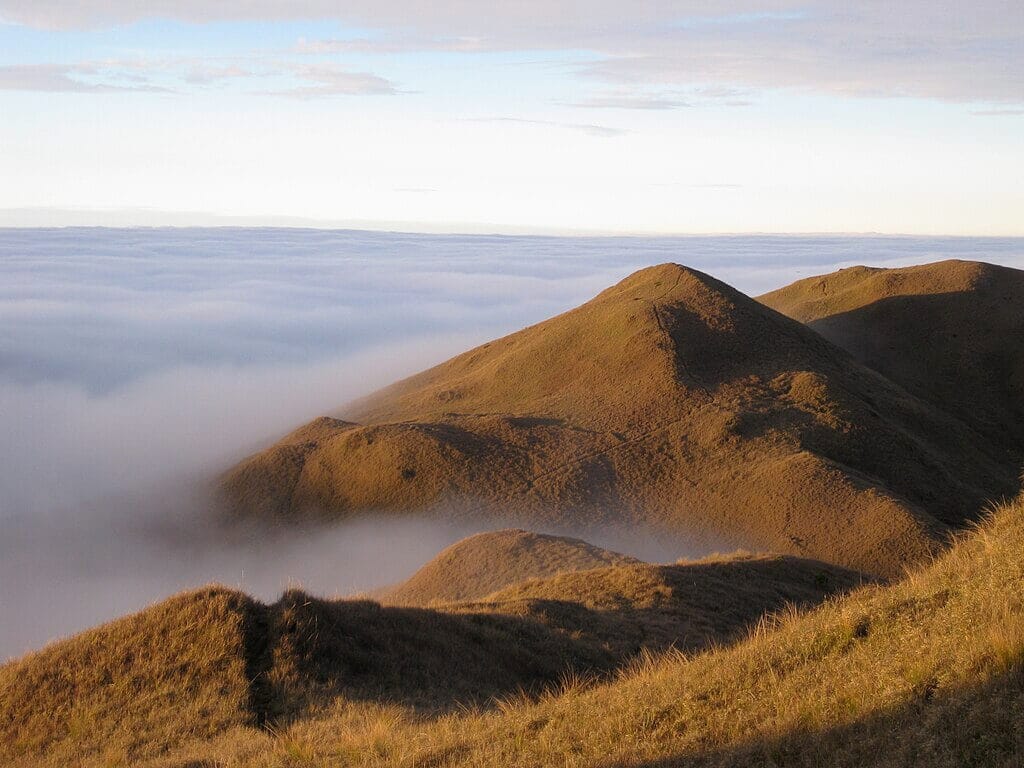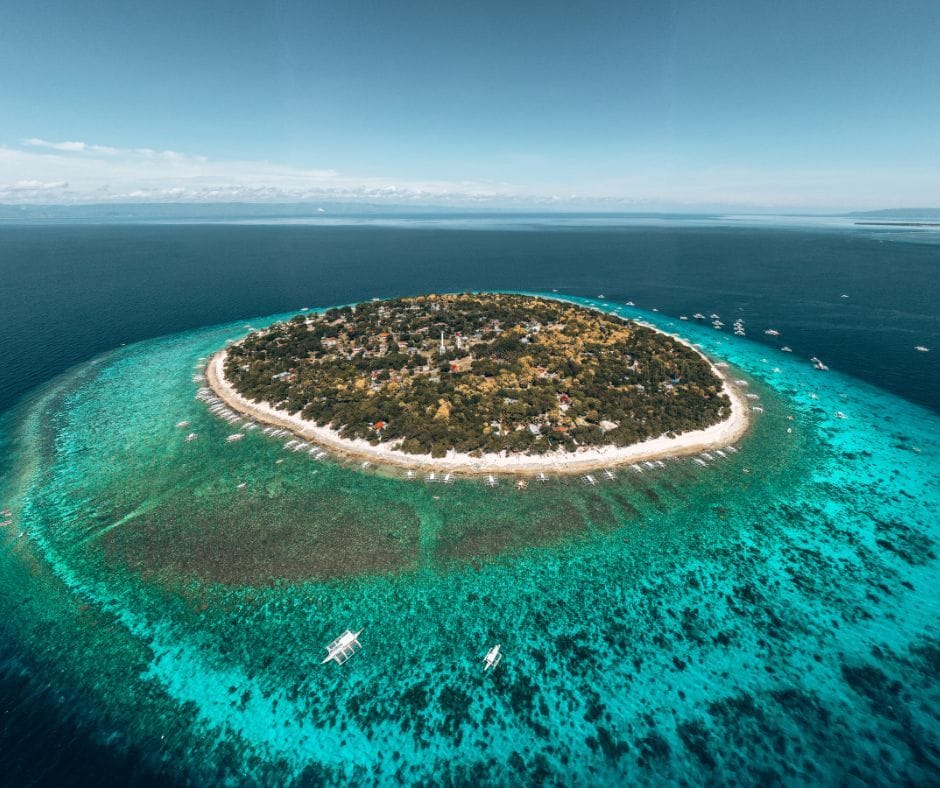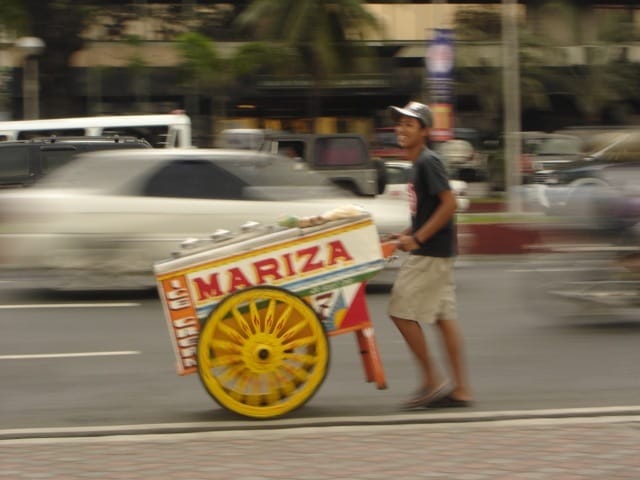- Finding Utopia Newsletter
- Posts
- The Cordillera Mountain Range – Where Peaks, Culture & Heritage Converge
The Cordillera Mountain Range – Where Peaks, Culture & Heritage Converge
Stories: The Cordillera Mountain Range Where Peaks, Culture & Heritage Converge - Balicasag Island, Bohol A Snorkeler’s Sanctuary & Sea Turtle Haven - Sorbetero, Discover the Spirit of Filipino Street Ice Cream
Hello Everyone,
Welcome to Finding Utopia, your go-to newsletter for discovering how to travel the Philippines and beyond!
Here is what we have for you today.
The Cordillera Mountain Range – Where Peaks, Culture & Heritage Converge
Balicasag Island, Bohol – A Snorkeler’s Sanctuary & Sea Turtle Haven
Sorbetero – Discover the Spirit of Filipino Street Ice Cream
The Cordillera Mountain Range – Where Peaks, Culture & Heritage Converge

Stretching across northern Luzon, the Cordillera Mountain Range unfolds as a spine of majestic peaks, mist-laden forests, and ancestral landscapes. Our latest blog, The Cordillera Mountain Range, delves into this extraordinary region where geography and heritage are inseparable.
Geography & Peaks That Touch the Sky
Cordillera spans six provinces—Abra, Apayao, Benguet, Ifugao, Kalinga, and Mountain Province—forming the most extensive mountainous terrain in the Philippines. It includes iconic heights like Mount Pulag (2,926 m), Luzon’s highest summit, famed for its surreal “sea of clouds” and star-studded dawns. Nearby, Mount Data (2,310 m) is home to mossy forests and deep river systems that nourish the region.
Living Heritage: The Rice Terraces & Igorot Culture
Carved into steep slopes by the Ifugao people, the UNESCO-listed Rice Terraces of the Philippine Cordilleras (e.g. Batad, Mayoyao, Nagacadan) reflect millennia of ecological wisdom. Despite climate challenges and modern pressures, communities still maintain the intricate irrigation, lunar-based planting cycles, and ceremonial rituals tied to the terraces.
Dominated by indigenous groups—Ifugao, Kankanaey, Bontoc, Ibaloi, Kalinga, and others—the region vibrates with rich traditions, from Hudhud chants to tattoo art and communal feasts. These groups are guardians of the land, weaving culture into every hill and valley.
Landscapes That Stir the Soul
Mount Pulag National Park: Beyond the sea of clouds, Pulag shelters unique ecosystems—dwarf bamboo grasslands, cloud forests, and endemic fauna like the Luzon bushy-tailed cloud rat.
Sagada, Mountain Province: Known for its hanging coffins, limestone caves (Sumaguing, Lumiang), and echo valleys, Sagada is a place where rituals and landscapes intertwine.
Chico River: Winding through rugged terrain, this river once symbolized ancestral resistance and remains vital to agriculture and community livelihoods.
Experience Cordillera: Top Activities
Hike Mount Pulag to witness dawn above the clouds and nights under million-star skies.
Trek the terraces of Banaue or Batad, tracing hillside paths and absorbing centuries of heritage.
Explore Sagada’s caves and cliffs, where spiritual traditions echo in limestone chambers.
Engage in local festivals like Panagbenga (flower festival in Baguio) or Lang-ay (Mountain Province), deeply rooted in Igorot culture and community life.
When to Go & Responsible Travel Tips
Visit between November and May for dry trails, clear skies, and cultural festivals. Late-year trips bring crisp mountain air and ideal trekking conditions.
Why Cordillera Captivates
The Cordillera Mountain Range is more than a scenic destination—it is a living cradle of Filipino resilience. Its soaring peaks whisper ancestral stories, its terraces mirror human ingenuity and cooperation, and its indigenous communities carry traditions that speak of symbiosis with the land.
Discover the full guide to Cordillera’s peaks, people, and perspective here
Balicasag Island, Bohol – A Snorkeler’s Sanctuary & Sea Turtle Haven

Just 30 minutes by boat from Panglao’s Alona Beach lies Balicasag Island, a maritime gem in Bohol and a renowned marine sanctuary. Our latest blog post, Balicasag Island, Bohol, explores why this tiny island—barely 600 meters across—has captured the hearts of beach lovers, snorkelers, and divers alike.
Marine Magic: Turtles, Reefs & Reef Walls
As a marine protected area since 1985, Balicasag boasts exceptionally clear waters and vibrant coral gardens. Snorkelers and divers flock here to swim with graceful sea turtles at Turtle Point and float among colorful reefs studded with clams, clownfish, frogfish, and schools of jacks. It’s an underwater wonderland for both beginners and seasoned divers.
For advanced dive enthusiasts, sites like The Wall, Canyons, and Diver’s Haven offer dramatic underwater landscapes: vertical drop-offs, coral pillars, and big-eye trevally spiraling in great currents. The famed Royal Garden showcases shallow reefs at 18m depth, its coral formations brilliant against deep blue waters.
Island Adventures & Sea Life
Early rising travelers often spot spinner dolphins diving alongside their boats at dawn en route to Balicasag. Once ashore, the island’s untouched beach is perfect for relaxing—or for photographers chasing footprints in the sand. Complement your trip with a visit to Virgin Island’s sandbar, a drifting dune that appears during low tide.
Planning Your Visit
Balicasag is best explored via island-hopping tours from Panglao:
Tours depart between 7–8 AM to avoid crowds and ensure calm seas.
Prices range from ₱1,500– 2,000 per person—often inclusive of snorkeling gear, entrance fees, and a meal.
Regulations limit just 150 divers per day, require guides, and charge about ₱300 per snorkeler. This helps preserve coral reefs and marine life.
Pro Travel Tips
Book authentic local guides instead of large group operators to support community livelihoods and ensure safety.
Bring a light reef-safe sunscreen, towel, cash, and a waterproof camera—no ATMs are nearby.
Respect marine life—don’t touch corals or feed fish; avoid going beyond designated zones.
Why Balicasag Is Truly Special
Balicasag may be small, but it is vast in marine diversity and environmental significance. From swimming with sea turtles and schooling fish to diving into mystical drop-offs, the island promises intimate encounters with nature. At the same time, its strict marine protections reflect Bohol’s commitment to sustainable tourism and reef conservation.
By visiting Balicasag, you're immersing yourself in one of the Philippines' premier ocean sanctuaries—where every dip, dive, and breath above the water reveals why this island is cherished.
Read the full travel guide and plan your ocean escape here:
Sorbetero – Discover the Spirit of Filipino Street Ice Cream

On the sunlit streets of the Philippines, a familiar tinkling bell announces joy: the arrival of the sorbetero, the traditional vendor of sorbetes, affectionately known as "dirty ice cream." In our latest blog post, Sorbetero–Philippines, we share the sweet, colorful story behind this beloved frozen treat and the resilient culture it represents.
From Elite Banquets to Neighborhood Streets
Sorbetes traces its roots to the 19th century, shortly after ice was first imported to the Philippines. Initially a rare delicacy, it was even served at Emilio Aguinaldo's inaugural banquet in 1898. Over time, resourceful Filipinos adapted the recipe with coconut or carabao milk and cassava flour to create a uniquely local ice cream that everyone could enjoy.
The Sorbetero & Their Colorful Cart
Each morning, sorbeteros collect their vibrantly painted wooden carts, often adorned with local motifs and ever-ready with three flavor-filled metal canisters. These carts—sometimes bicycle-attached—are iced with salted crushed ice to keep the sorbetes cold all day. As sorbeteros walk the neighborhood, the ice cream is announced by a signature bell chime.
Flavors That Taste of the Philippines
Sorbetes is flavored with tropical favorites such as ube (purple yam), mango, and buko pandan, alongside Manila classics like queso (cheese), mantecado (butter), avocado, jackfruit, pinipig, and melon. Over time, modern tastes added chocolate, mocha, and cookies & cream to the mix. One scoop is usually served in a wafer cone, sugar cone, or even inside a soft pandesal bun—the iconic Filipino ice cream sandwich.
“Dirty Ice Cream”—The Misnomer That Became a Badge
Despite the nickname, sorbetes is clean, artisanal, and deeply cherished. The term “dirty ice cream” emerged from mothers cautioning their children against street food. Yet the name stayed—not as a criticism, but as an affectionate embrace of its grassroots origin and nostalgic charm.
Why Sorbetes & the Sorbetero Endure
Community Connection: Sorbeteros nurture local bonds—kids chase after them after school; neighbors buy a cone as an everyday treat.
Cultural Heritage: This is a tradition passed down through generations—a symbol of Filipino ingenuity, flavor, and storytelling.
Accessible Joy: Affordable and readily available, sorbetes brings delight to city centers, fiestas, and even private parties with mobile carts for rent.
Experience It Yourself
Look for sorbeteros near parks, schools, markets—or hire a cart for gatherings.
Try classic flavors like ube and queso or adventurous ones like avocado or pinipig.
Choose serving options: cones or the famous pandesal sandwich.
Support sustainability: opt for vendors who use sanitary scooping and eco-friendly cups or cones.
Sorbetes is more than ice cream—it’s a tradition, a melody, and a moment of Filipino warmth in every scoop. When you hear that tinkling bell, it means something sweet is coming your way: simple joy, shared history, and a taste of home.
Discover the full flavor-filled story and meet the sorbetero culture here:




Reply